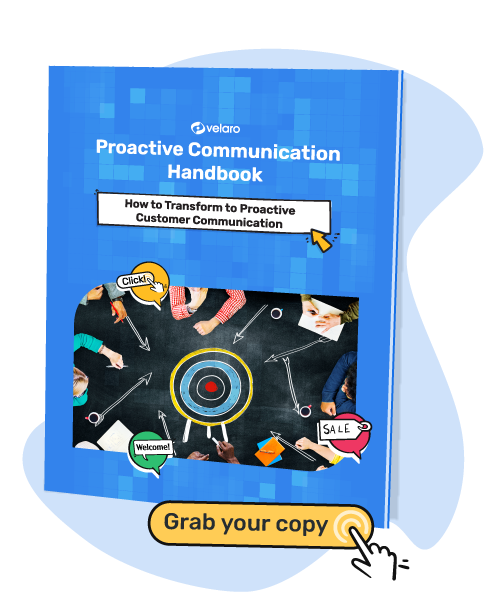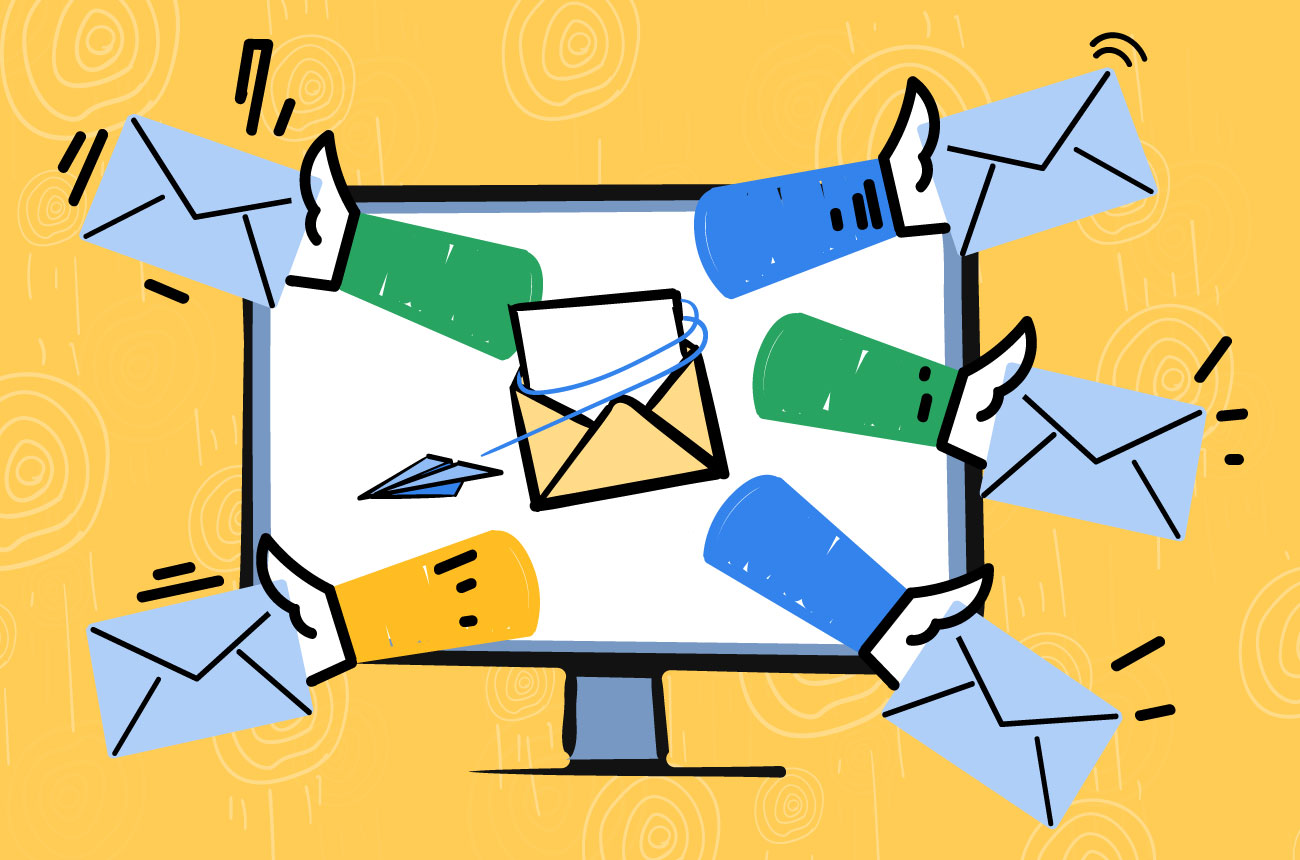Mastering the art of sales email communication is crucial for business success. Your emails need to go beyond professional design and engaging content, your messages need to compel a response. But it doesn't stop there. The true test of a successful sales email strategy is its ability to initiate an engaging conversation and steer it towards closing deals.
In this blog, we'll delve into the common pitfalls to avoid, and we provide a toolkit of techniques designed to increase engagement and response rates to your sales emails, leveraging real-life examples received by our team.
Navigating the Minefield: Unveiling Common Email Blunders and Effective Remedies
Understanding where we falter is the first step towards refining our approach. The following are common email blunders that many of us are guilty of, perhaps unknowingly. Each pitfall is paired with a practical recommendation, paving the way for more engaging, impactful sales emails templates. Let's step into this crucial exploration of how to transform common errors into effective sales email strategies.
The Issue of Unnecessary Introductions
Consider a sales email that starts with, "My name is Don Darren...". Such an introduction in the opening line is unnecessary and often feels impersonal. These redundant statements waste the reader's time and the space that could instead be used to capture your reader's attention and deliver your message.
The Remedy: Introduce yourself indirectly by showing knowledge about the recipient's company or industry. Your name is not a priority, ditch the redundancy and get straight to the point. We're already aware of your identity by the email address or signature, let's hear your understanding of who we are and show us that you genuinely care.
Overstepping with Presumptuous Conclusions
An email stating, "I thought our video and marketing services could be a good fit for your company," is overconfident. Without supporting evidence or personalized context of how the services or products you offer benefit the recipient, your approach could come off as if you have already jumped to conclusions and are certain about the fit.
The Remedy: Explain why your services are a good fit by showcasing specific and relevant benefits and success stories. Make your pitch custom-fit to the recipient's needs and challenges.
The Vague Buzzword Trap
Sentences such as "Circling back on this," assume prior outreach and could inadvertently damage your rapport with the prospect. This form of ambiguous and clichéd language can foster confusion, particularly if no previous communication has occurred, potentially alienating the reader.
The Remedy: Always specify what you're referring to or what you aim to discuss in your communication. Eschew industry jargon and choose clear, plain language that leaves no room for misunderstanding. Precision in communication fosters clarity and establishes a solid foundation for a meaningful conversation.
Steering Clear of Platitudes: Emphasizing Originality and Credibility
Employing broad statements like "Drawing inspiration from the world's top marketing gurus…" lacks precision and falls short in communicating the value you bring. To set the stage for your point, provide a brief introduction of the guru or statistic in the context of your email. Give a concise overview of their expertise or the relevant statistic. On another point, the use of "guru" may be perceived as overly formal or even pretentious, possibly isolating readers who appreciate a more straightforward approach. This phrase doesn't inherently illustrate the advantages or value the reader will derive from your product or service, which should be the core focus of any sales email.
The Remedy: Opt for direct, specific, and value-centric language, such as, "Our approach combines profound industry expertise with a tailored focus on your unique needs such as..." This style of communication not only conveys your message more clearly but also establishes your credibility while underscoring the distinct benefits your potential clients can anticipate.
The Missing Call to Action
When an email concludes with a vague "Let's talk and see what we can do," it leaves the recipient confused about the next step. The drawback lies in the email's failure to provide a clear next step, leaving the recipient uncertain about whether to call, reply via email, or schedule a meeting. This lack of a specific call to action can result in confusion and inaction.
The Remedy: Make the next steps unmistakable and simple. Explicitly state whether they should call, email back, or schedule a meeting. Provide a clear call to action button such as calendar invitation or an invitation to a free trial.
Undermining Trust with Vague Offers
Emails containing vague offers such as sending an unspecified package or offering a complimentary hotel stay, in return for an unsolicited service, such as attending a trade show or filling out a review form, can undermine trust and may be perceived as manipulative.
Don't press the recipient with scarcity tactics by mentioning that the offer has been extended to multiple individuals and might not be available if they don't act fast. It’s vital to maintain respect for the recipient's decision-making process.
The Remedy: Be transparent, specific, and respectful. Clearly define what you're offering and asking in return and avoid pressure tactics.

The Cold Email Catastrophe
An email exhibiting inconsistent formatting—such as varying font types, excessive bold text, overuse of emojis, incompatible colors, irrelevant content, and an unclear call-to-action—undermines its efficacy. Such inconsistencies fail to effectively communicate the value you bring and lack an understanding of the recipient's needs.
The Remedy: Adopt a consistent and professional formatting style. Use a single, easy-to-read and email safe font type and limit the use of bold text to essential points. Emojis should be used sparingly, if at all, and colors should be harmonious and pleasing to the eye.
The content should be relevant and tailored to the recipient's needs, and always include a clear and compelling call-to-action. This way, the email communicates its purpose effectively, shows an understanding of the recipient's requirements, and reflects the value you can provide.
The Impersonal Automation Approach
Emails that emulate the "zombie outbreak" approach - that is, sending additional automated, generic, and non-personalized emails - reflect a lack of due diligence and professionalism. These impersonal and indiscriminate communications demonstrate a disregard for the recipient's time and the importance of informed decision-making. It's crucial to craft tailored messages that highlight your understanding of the recipient's needs and provide the value necessary to encourage engagement.
The Remedy: Prioritize authenticity, humility, and relevance in your communication. Aim to provide value upfront, keep your email concise, and respect the recipient's time.
Mastering the Art of Business Compliments in Emails
Generic or awkward compliments such as "I'm really impressed by how Acme Solutions Inc. is simplifying chatbot creation for businesses, converting leads into customers," can feel insincere, making your interaction impersonal and potentially raising suspicion about your intentions.
The Remedy: Be specific, relevant, and succinct when complimenting. Tailoring your praise to the recipient's business achievements not only resonates more but also conveys your sincerity and understanding of their work.
Perfecting the Balance: Striking the Right Tone
Leaning on overused greetings like "Hi Melinda, I hope this message finds you well," may come across as disingenuous and detract from the professionalism of your communication. Bear in mind, commonly used phrases suggested by AI tools such as ChatGPT can inadvertently lead your emails towards a path of unoriginality.
The Remedy: Aim for a tone that is professional yet amicable. Unless you've established a rapport with the recipient, refrain from employing overly familiar language. Though AI tools can be useful, deploying them judiciously ensures your emails maintain their authenticity and unique character.
Simplicity is Key: The Power of Clarity and Brevity in Emails
Dense and convoluted sentences like, "Our platform enables effortless integration of live chat and messaging, empowering you to build lasting connections with your customers and setting you apart from the competition," can make your email challenging to digest.
The Remedy: Embrace clear and concise messaging by breaking down complex notions into short, straightforward sentences. Make clarity and brevity your key priorities to enhance your reader's comprehension and foster stronger engagement. An understandable message is a powerful tool in the art of effective communication.
Bypassing Common Hurdles and Upping Engagement
The digital landscape presents a golden opportunity for shaping exceptional sales emails. The key takeaways are: prioritize uniqueness to create thought-provoking and action-inspiring emails, leverage appropriate language to foster connection, and use effective tactics for sparking meaningful conversations that drive successful negotiations.
Crafting an effective sales email requires careful attention to detail and a thorough understanding of your recipient's needs and context. Avoid redundant introductions, presumptuous conclusions, overused phrases, and the lack of originality. Be clear, concise, and relevant, offering specific benefits tied to the recipient's needs. Avoid gimmicks, maintain a professional tone, and always provide a clear call to action.
Finally, optimizing your approach to sending emails can significantly enhance engagement rates and, ultimately, boost conversion rates, fostering trust and successful business relationships with your prospects. By avoiding the pitfalls and implementing these techniques, you can turn your sales emails from mere messages into persuasive communication tools.






